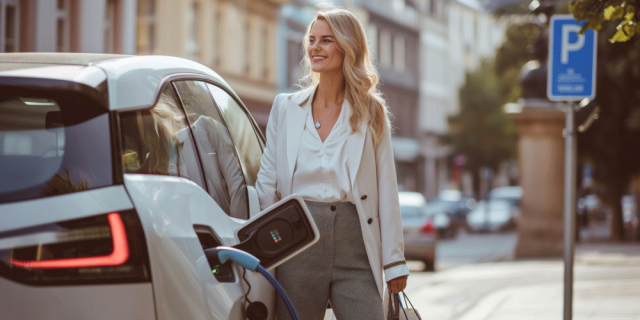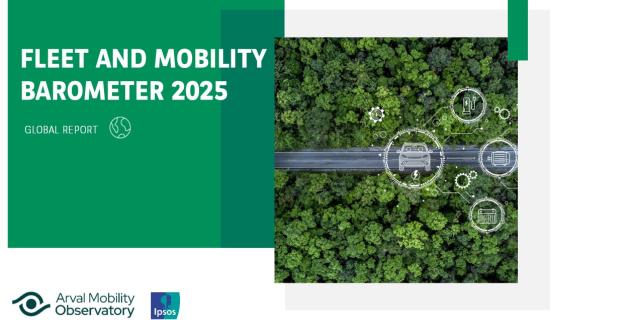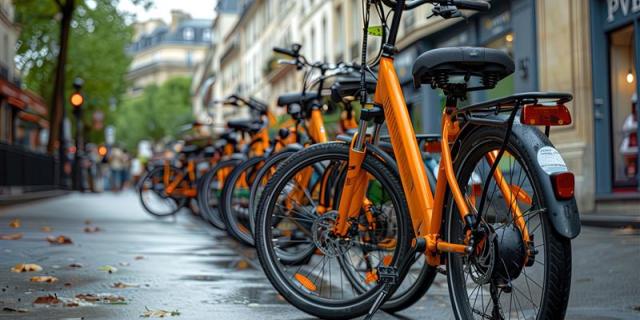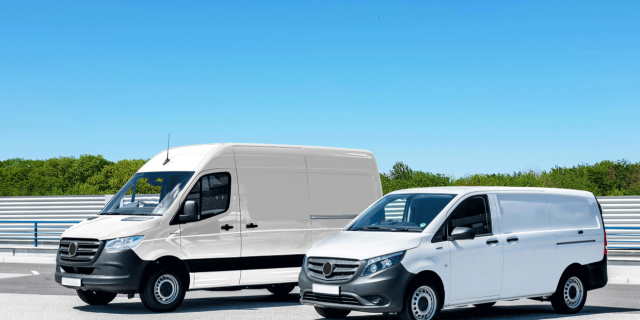Three scenarios for European mobility in 2035
How can we imagine the mobility of the future? After having made a strategic change in its vehicle leasing business, Arval is envisioning the trends which might shape mobility in Europe by 2035. From energy issues, to supply difficulties, along with the promises of autonomous vehicles, here are three scenarios that give you a glimpse of the future.
Scenario 1: Rural development of autonomous vehicles
For once, innovation is benefitting the countryside first. In 2035, autonomous vehicles, an emblematic symbol of the future of mobility, have mainly developed in the form of shared shuttles in rural areas.
First tested by a handful of pioneering companies to take care of their employees’ commuting, they were later financed and encouraged by public authorities, as they allowed for a better public transport network in the regions. Then autonomous vehicles began to spread to school pick-up services, delivery services, and rubbish collection. Bookable in advance, and available on demand, they now connect remote locations and contribute to improved social and territorial equality. Habitually dependent social groups, such as the elderly, and people with reduced mobility, now have affordable options for getting around. Young people are also taking them, reserving autonomous vehicles to get back home from nightclubs.
In cities, the situation is different. Despite major technical advances in laser guidance, geolocation and artificial intelligence, autonomous vehicles are transitioning into large urban centres more slowly. Their environments are much more complex for machines to interpret. With all their different architectural forms, the morphology of intersections, users, signage and advertisements… The right balance between ultra-cautious driving and smooth driving has yet to be found.
In business centres, such as La Défense in Paris and The City in London, new buildings have adopted a “by design” approach to mobility, right up from the initial design stage. Autonomous shuttles run on dedicated routes, shuttling employees from their workplaces to the nearest metro station.
Countryside users, for their part, have traced their own paths. At a lower cost, they have managed to adapt and simplify road infrastructures, thanks to markings on the ground. Inspired by car-sharing, dedicated stations have been placed in strategic locations. Thanks to the development of “vehicle-to-everything” communications, connecting cars to their environment (infrastructure, pedestrians, other vehicles, etc.), traffic in general is more fluid, and cohabitation with non-autonomous vehicles is smooth.
Scenario 2: The energy transition
In 2035, combustion vehicles are in sharp decline in most European countries, as was planned for by the 2050 carbon neutrality laws. At the top of the table, Norway, the Netherlands, and the UK are benefiting from ambitious public policies and favourable taxation, while at the bottom, Turkey and Ireland still have progress to make.
Major projects have been different from country to country: Germany, which invested in their charging station network early on, was quickly able to convince drivers to switch to electric. Putting in place low carbon emission zones in metropolitan areas has also been a driving force behind the conversion of vehicles.
Not all electricity is green, yet. For example, France has been able to benefit from its nuclear power network to produce carbon-free electricity, while others have had to invest heavily in renewables. In this regard, the democratisation of small electricity production units has allowed regions to define their strategies locally, according to their geographical advantages (sunshine, wind, sea currents, etc.). Countries most dependent on intermittent energy sources have also had to boost the development of vehicle-to-grid networks, so as to optimise the redistribution of this clean electricity.
The popularisation of retrofitting has also been a particularly decisive factor. This circular economy approach involves installing electric motors in conventional internal combustion bodywork. This reduces the cost for households, and above all the carbon footprint of their transition to electric. In the 2020s, a growing number of young companies obtained their retrofitting permits: the number of workshops has therefore multiplied, and prices have fallen significantly.
But above all, progress in terms of batteries has been the key element. Several fronts have moved forward in parallel: reducing the weight of batteries while extending autonomy, reducing the number of rare earth materials in their compositions, and, above all, recycling them. More and more batteries are recovered and have been given a second life. Fuel cells are becoming popular, promoting the use of hydrogen as an energy storage medium.
Scenario 3: Industry goes makeshift
The Covid crisis had revealed the first dysfunctions in our systems, and the climate crisis has done the rest. Between 2020 and 2035, supply difficulties have significantly increased. Production and logistics chains are becoming more and more unreliable, due to issues with lack of materials, components and energy.
To get around these difficulties, and anticipate shortages, car manufacturers have simplified their products, and a form of design of frugality has developed. Light and inexpensive vehicles are on the increase. They are not very technologically sophisticated, and their parts are easily interchangeable. Informally, reuse and recycling have become the norm. Light and versatile vehicles are developing, taking multiple forms, sometimes flirting with soft mobility or micro-mobility. The streets are filled with tuk-tuks, cargo bikes, sidecars, and micro-cars. These new vehicles are adapted to their particular uses. Depending on their needs, families own several of them, and they are shared by groups of friends or neighbours.
By definition, the reduction in the weight of these vehicles has led to a reduction in energy requirements. These vehicles are fitted with innovative hybrid powertrains, using solar panels or biofuels. Waterways, such as rivers and canals, are increasingly being used for everyday travel and transporting freight. Urban logistics and last mile delivery issues are being progressively solved, as a network of recycling workshops and small warehouses develops. It’s the return of small-scale industry to cities, and of the circular economy. Enormous progress in the reuse and recycling of rare materials has made it possible to more efficiently recover waste products locally. Thus, far from being hampered, new forms of mobility have turned out to be rich and creative.
In partnership with Usbek & Rica











